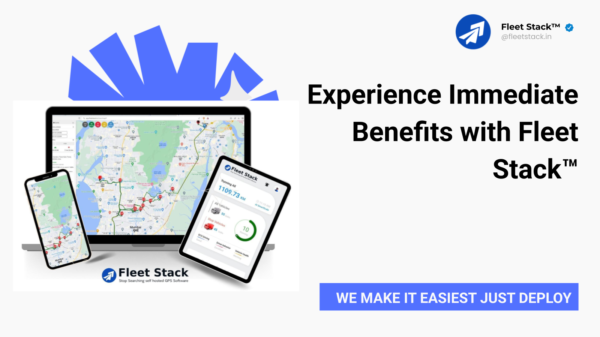In the dynamic world of digital development, the key to success is creating the most cutting-edge interfaces and maintaining integrity and accessibility. As websites and apps evolve, the risks of unintended changes to the visual appearance and the need for compliance with accessibility standards become more important.
Visual regression testing is a constant in the web design, characterized by rapid change. It provides visual consistency. Accessibility Compliance, conversely, is a beacon of inclusivity that ensures the digital landscape is navigable by users of all abilities.
This blog explores two crucial aspects of the digital journey, Visual Regression Testing, and Accessibility Compliance, and explores the importance of VRT, Accessibility Compliance, and their seamless relationship. They play a pivotal role in shaping our digital environments.
Understanding Visual Regression Testing & Accessibility Compliance
What Is Visual Regression Testing?
By comparing screenshots taken before and after code execution, visual regression testing can ensure that code changes impact the user’s experience. It is also known as Visual Testing or visual snapshot testing.
Visual testing is a way to verify the suitability of the visual aspects of an application’s user interface. Visual testing or visual validation are other terms we can use. This quality assurance measure aims to ensure that the front end of an app displays correct data and content.
Regression Testing is a term that you may not be familiar with. It ensures that any changes to software you make do not cause breakage of elements previously working well. This testing is a visual test that provides any software changes that don’t lead to style issues.
Visual regression testing tools usually take screenshots of the most recent user interface and compare them with the original screenshots. The website should still render exactly as expected despite several modifications. The web page should look and function the same on various browsers.
Importance of Visual Regression Testing
Today, applications are evolving to meet customer needs. It is important to maintain the functionality and layout of the application across different browsers.
Visual testing is now a crucial part of the process, especially since most companies have adopted Continuous Integration.
The user interface must look good across various devices, browsers, operating systems, and screen resolutions. It only takes a small UI error to result in excessive revenue losses.
Customers are unlikely to use a banking application with many bugs for security reasons. Even if the application is not as sensitive as banking, users will still leave it if they find it inconvenient or annoying.
Visual discrepancies can be easily detected when the QA team performs visual regression tests in earlier SDLC phases and developer testing.
Businesses can also use this approach to save time and resources they could otherwise devote to other scaling methods. It doesn’t really matter how perfect your application is. It doesn’t matter how flawless your application is if you don’t provide a great user experience. Visual testing is crucial to quality control, whether about UX or UI.
Visual regression testing is also important because high-quality designs give a company more credibility and trust by strengthening its brand image.
Visual testing is useful in many areas, including web and mobile apps, customer systems like airlines, banking, travel and airline sites, and marketing websites.
What is Accessibility Compliance?
Accessibility compliance ensures that digital content, such as websites and applications, adhere to standards and guidelines to ensure accessibility to all users, including those with disabilities.
Accessibility compliance’s primary goal is to enable individuals with disabilities, including visual, auditory, and motor impairments, to navigate digital content.
The following are the key features of accessibility compliance:
Web Content Accessibility Guides (WCAG) The World Wide Web Consortium developed these guidelines. They are widely recognized as the standards for web accessibility. These guidelines provide comprehensive recommendations for making web content accessible for people with disabilities.
Inclusive design: Accessibility Compliance involves designing and creating digital content from the beginning, prioritizing inclusivity. This approach is designed to produce products that can be used by the largest possible audience, no matter their ability or disability.
Assistive Technology Compatibility: The accessible content should be compatible with assistive technology such as screen readers and magnifiers. Voice recognition software, for example, can also help people with disabilities interact digitally.
Keyboard accessibility: Accessibility compliance is crucial for ensuring that all functionality can be operated using a keyboard. It is important to note that individuals with disabilities may depend on keyboard navigation.
Alternative text for Images: Images must be accompanied by descriptive alternative texts that can be read using screen readers. This will provide information to users with visual impairments about the purpose and content of the image.
Captioning & Transcripts: Multimedia, including audio and video, should be captioned or have transcripts to make information more accessible to those who are hard of hearing or deaf.
Color Contrast Considerations: Design decisions related to color and contrast must be made, keeping accessibility in mind. This will ensure that the content is legible by users with visual disabilities.
It is important to comply with accessibility standards to provide a positive experience for all users. It aligns with the principle of digital spaces being open and welcoming for individuals of all abilities.
Relationship Between Visual Regression Testing and Accessibility Compliance
Visual Regression Testing and Accessibility Compliance are closely related. This relationship is important in ensuring digital products maintain a consistent appearance but remain accessible to users with diverse abilities.
1) Enhancing the User Experience
Visual Regression Testing and Accessibility compliance share the same goal of improving the user’s experience.
VRT aims to maintain a consistent appearance and ensure that users experience a familiar interface in all iterations of the digital product. This visual coherence directly contributes to a positive, intuitive user experience that fosters user confidence and engagement.
In tandem with Accessibility Compliance, it addresses a broader range of user needs, ensuring that digital content is accessible to people with disabilities.
Accessibility Compliance aims at eliminating barriers by adhering to standards such as the Web Content Accessibility Guidelines. The dual focus of visual consistency and inclusivity results in a digital environment where users can easily navigate, consume content, and interact with each other without any confusion or hurdles.
VRT’s collaboration with Accessibility Compliance creates a digital environment that is user-centric. A visually appealing, accessible interface creates a positive, empowering experience, regardless of the individual’s capabilities.
The combined efforts of VRT, Accessibility Compliance, and other stakeholders contribute to creating a digital world where usability and inclusion are merged to create a truly enhanced user experience.
2) Identifying Visual Changes that Affect Accessibility
VRT is crucial in detecting visual discrepancies introduced during development or updating. These changes may inadvertently impact the accessibility of an application or website.
Users with visual impairments may be affected by changes in color contrast, layout, or other factors. VRT allows developers to catch issues in the early stages of development, thus preventing accessibility barriers.
3) Preventing Regression of Accessibility Features
It is important to prevent the regression of accessibility functions to ensure that digital products are inclusive and usable through various updates and releases.
Accessibility features facilitate a positive user experience for people with disabilities. They include elements like alternative text for images and keyboard navigation.
There is a chance that accessibility features could be inadvertently affected when implementing new features or updating a website or app. This can lead to barriers for people with disabilities.
Visual Regression Testing is a key tool in addressing these concerns by actively monitoring any changes to the visual presentation of digital products. It includes elements that directly impact accessibility, like color contrasts and font sizes.
By configuring VRT tools to target accessibility-related features specifically, development teams can proactively identify any visual alterations that might compromise the product’s usability for individuals with disabilities.
If a website is redesigned, the contrast between background and text colors can change. This could affect readability for those with visual impairments. VRT can detect these changes and alert developers so that they take the necessary steps to enhance or maintain accessibility features.
VRT will also flag a new interactive feature that does not support keyboard navigation as a possible regression in accessibility features. This alerts developers to fix the problem before the end users are affected.
4) Streamlining Testing Processes
Integrating Visual Regression Testing, Accessibility Compliance, and tools such as LambdaTest will streamline testing processes.
By combining these approaches with LambdaTest, a unified approach is created that addresses visual and accessibility issues simultaneously.
It provides teams with a powerful tool for cross-browser tests, which allows them to maintain consistency across browsers and devices. This integration saves time and resources but also improves testing efficiency.
LambdaTest is a key component of this streamlined process, ensuring a thorough evaluation from detecting unintended visual changes to checking accessibility features. This contributes to a robust, reliable quality assurance procedure.
5) Early Detection of Issues
Visual Regression Testing and Accessibility compliance rely on early detection of problems. Early adoption of these testing techniques can help teams identify and resolve potential visual and accessibility issues. VRT tools detect unintended visual changes, preventing regressions.
Accessibility Compliance checks ensure inclusiveness from the start. This proactive approach reduces the risk of issues affecting users and the time and resources required to fix bugs.
6) Complementary Roles in Quality Assurance
Visual Regression Testing and Accessibility compliance are complementary roles in quality assurance. VRT examines every visual aspect of a product to ensure consistency and prevent unintended changes. Accessibility Compliance is focused on creating an inclusive user experience for people with different abilities.
Together, these practices create a holistic approach to quality assurance, covering visual and accessibility dimensions.
This collaboration strengthens the overall product quality and underscores our commitment to delivering digital solutions that are visually appealing as well as universally accessible. It contributes to a positive experience for all users.
The Final Talk
The symbiotic relationship between Visual Regression Testing and Accessibility compliance is a cornerstone of the quest for an inclusive and seamless digital experience. VRT’s vigilant eye catches unintentional visual changes, ensuring consistency.
Accessibility Compliance ensures that digital landscapes are accessible to all users. Together, they create a solid quality assurance framework.
VRT and Accessibility Compliance work together to streamline testing processes and foster a user-centric, proactive approach emphasizing early detection and prevention of issues.
This collaboration is a sign of commitment in an age where digital inclusion is a priority. It represents a desire to create digital environments that are both visually appealing and universally accessible.
You may also like to read:




























































